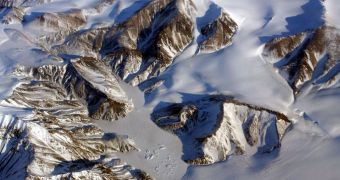A group of experts from the US National Science Foundation (NSF), the Department of Energy (DOE) and the Department of Agriculture (USDA) held a webcast yesterday, announcing that they would be opening up a joint research project aimed at developing better climate simulations. The end goal of the Decadal and Regional Climate Prediction Using Earth System Models (EaSM) initiative is to model global warming and climate change with unprecedented accuracy, providing policymakers with new datasets to base their work on, the NSF reports.
In addition to the models themselves, the project will also investigate potential impact that would be modeled to a degree of accuracy never before encountered in such efforts. In order to get things off the ground, the actors involved are currently in the process of accepting project proposals from research groups interested in participating in this endeavor. The ultimate goal is to include specialists from numerous research fields, such as biologists, chemists, computer scientists, geoscientists, materials scientists, mathematicians, physicists, computer specialists and social scientists, among others.
“This extraordinary and exciting multi-agency research program will enable a major step forward in our ability to understand and predict both climate change and its impacts on people – at the spatial and temporal scales relevant to human life and societal decision making,” explains the assistant director of the NSF Geosciences Directorate, Timothy Killeen. “This project integrates expertise from multiple communities – including the fundamental sciences – which is needed to understand climate change processes, and advanced modeling, which is needed to quantitatively assess climate change impacts,” adds the acting assistant director for the NSF Mathematical and Physical Sciences Directorate, Edward Seidel.
One of the primary goals of the investigation will be figuring out the changes ecosystems will be subjected too as global warming starts making more of its effects felt. Possible means of promoting adaptation to these changes are among the most sought-after objectives in EaSM. The projects that will be accepted as part of the initiative will be funded by all three main actors. About $30 million will be provided by the NSF, the DOE will contribute $10 million, and the USDA will add another $9 million.

 14 DAY TRIAL //
14 DAY TRIAL //